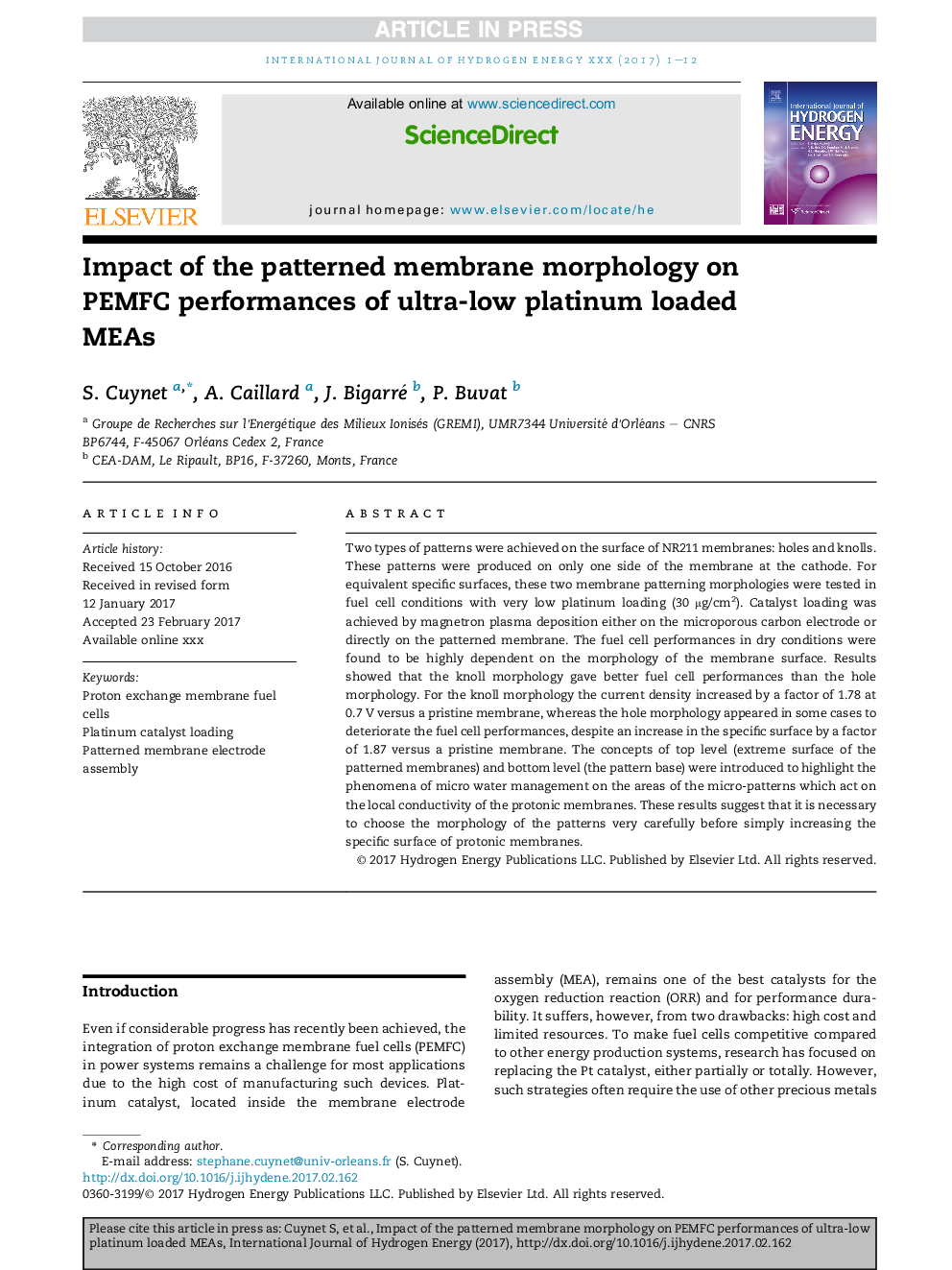| Article ID | Journal | Published Year | Pages | File Type |
|---|---|---|---|---|
| 5148286 | International Journal of Hydrogen Energy | 2017 | 12 Pages |
Abstract
Two types of patterns were achieved on the surface of NR211 membranes: holes and knolls. These patterns were produced on only one side of the membrane at the cathode. For equivalent specific surfaces, these two membrane patterning morphologies were tested in fuel cell conditions with very low platinum loading (30 μg/cm2). Catalyst loading was achieved by magnetron plasma deposition either on the microporous carbon electrode or directly on the patterned membrane. The fuel cell performances in dry conditions were found to be highly dependent on the morphology of the membrane surface. Results showed that the knoll morphology gave better fuel cell performances than the hole morphology. For the knoll morphology the current density increased by a factor of 1.78 at 0.7 V versus a pristine membrane, whereas the hole morphology appeared in some cases to deteriorate the fuel cell performances, despite an increase in the specific surface by a factor of 1.87 versus a pristine membrane. The concepts of top level (extreme surface of the patterned membranes) and bottom level (the pattern base) were introduced to highlight the phenomena of micro water management on the areas of the micro-patterns which act on the local conductivity of the protonic membranes. These results suggest that it is necessary to choose the morphology of the patterns very carefully before simply increasing the specific surface of protonic membranes.
Keywords
Related Topics
Physical Sciences and Engineering
Chemistry
Electrochemistry
Authors
S. Cuynet, A. Caillard, J. Bigarré, P. Buvat,
